Around 9.50 p.m. on June 22, shouts of “ Uddhav tum aage badho, hum tumhare saath hain (Uddhav keep moving ahead, we are with you)” and “ Kaun aala re kaun aala, Shiv Sena cha wagh aala (See who is coming, Shiv Sena’s tiger is coming)” rent the air as hundreds of loyal Shiv Sainiks carrying placards and party flags lined the 15-km stretch from Malabar Hill to Bandra in Mumbai braving the rain and fighting back tears.
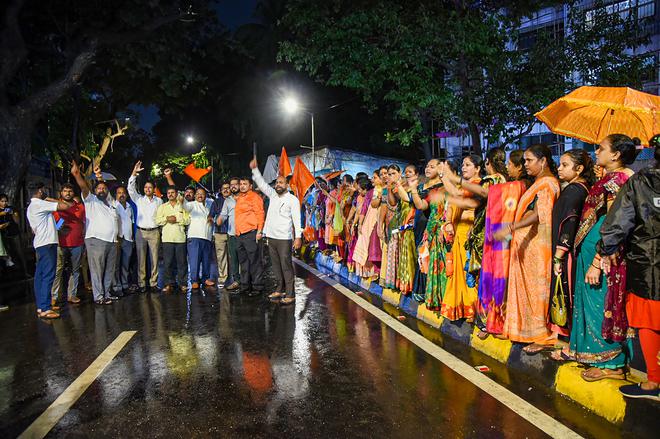
It was a spontaneous congregation of party workers to express their love and support for 61-year-old Sena chief Uddhav Thackeray who had decided to vacate the Maharashtra Chief Minister’s official residence, Varsha, along with his wife Rashmi and sons Aaditya and Tejas, and move to his personal residence, Matoshree, following a revolt by 39 party MLAs led by Eknath Shinde.
Earlier, in a virtual address, an emotional Mr. Thackeray had said: “The sad part for me is that my own people have lost their trust in me. I considered them my own. Tell me that I should quit on my face and I will resign.”
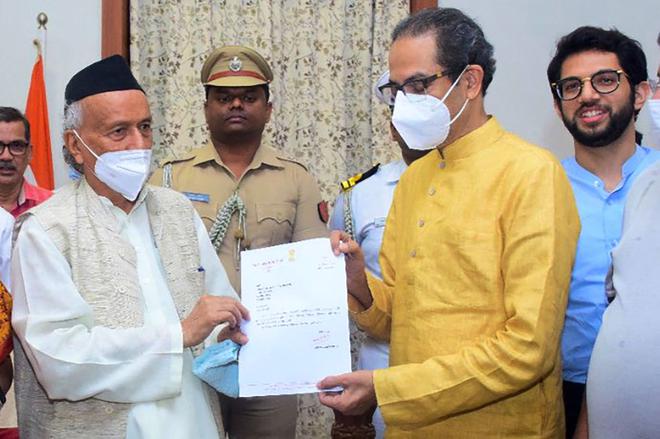
The resignation finally came on June 29, shortly after the Supreme Court refused to stay the floor test ordered by Governor Bhagat Singh Koshyari for the ruling Maha Vikas Aghadi coalition — comprising the Shiv Sena, the Nationalist Congress Party and the Congress — to prove its majority in the Assembly. Mr. Thackeray announced his resignation both as the Chief Minister and Member of the Legislative Council, but pledged to continue to work for the Sena.
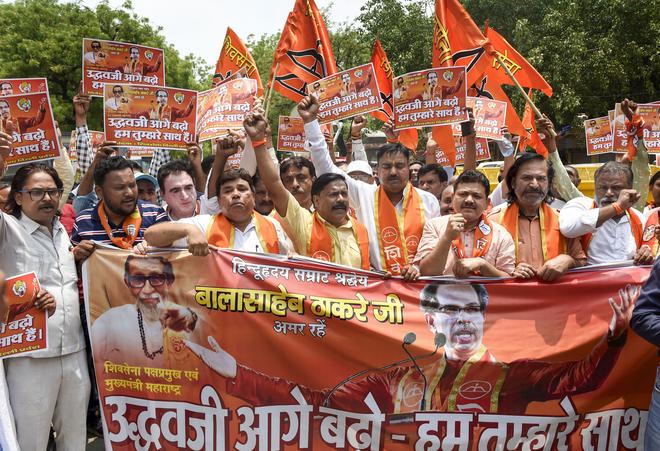
The rebel MLAs breaking ranks over Mr. Thackeray’s alleged failure to pursue the outfit’s core Hindutva ideology to keep the coalition government afloat has triggered a wave of sympathy and a groundswell of support for the beleaguered Sena president from party workers. Shiv Sainiks on the ground say they have pledged their allegiance to the Thackerays and will firmly stand behind them come what may. The party workers say only the Thackerays can take the Sena’s agenda and legacy forward and everyone is thankful for the stellar manner in which the former Chief Minister guided the State through the three waves of the COVID-19 pandemic.
The sainiks have also backed Mr. Thackeray’s interpretation of Hindutva that works for the welfare and betterment of everyone and slammed the Bharatiya Janata Party (BJP) for claiming to be the sole torchbearer of the ideology in the country. However, it remains to be seen if the Thackerays can channel the popular sentiment to revive the party’s flagging fortunes in the State.
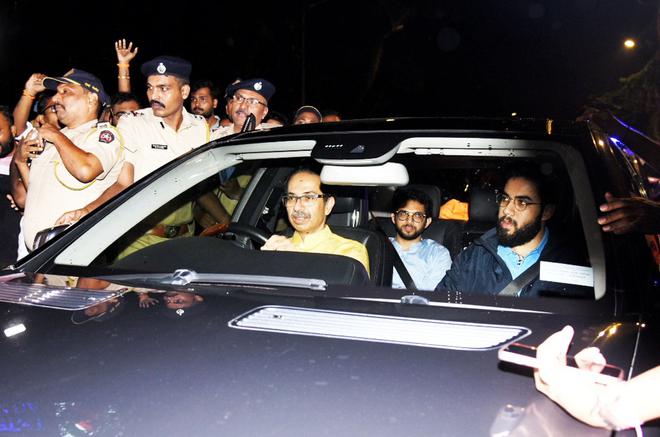
Question mark over true heir
With Mr. Shinde, who was sworn in as Maharashtra’s new Chief Minister on Thursday with the support of the BJP, staking claim to further the agenda of “Balasaheb’s Shiv Sena”, a question mark hangs over who is the true heir to Sena founder Bal Thackeray’s legacy.
“Even though Uddhav ji has resigned as Chief Minister, he has and will always remain the president of our party. He will continue to serve his people like he did before he was made the CM,” says 80-year-old Govind Koregaonkar, who witnessed the inauguration of the Sena’s first shakha (branch) in 1966 by Bal Thackeray at Gangadhar Niwas on Gokhale Road in Dadar.
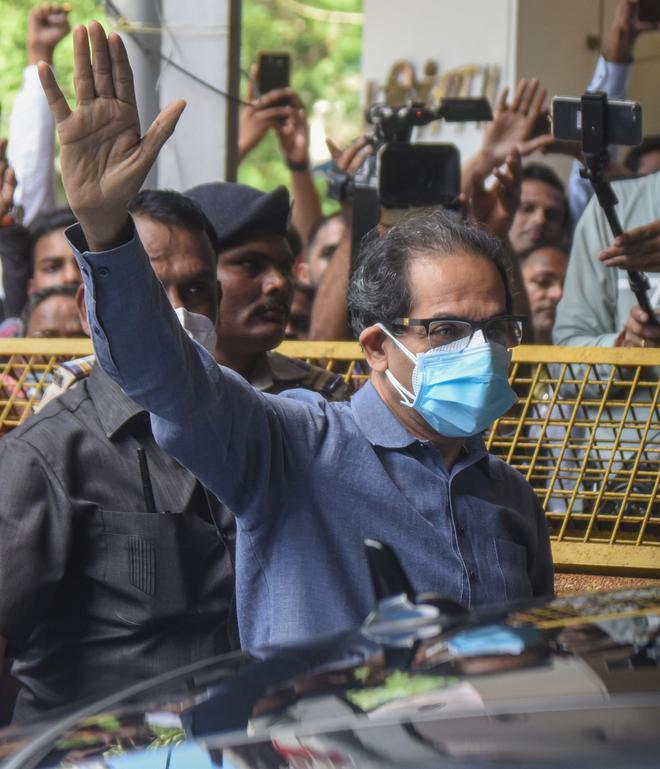
Jogging his memory, Mr. Koregaonkar says he remembers Balasaheb saying he wanted to set up a shakha in every ward so that the branches of the big tree (the party) could be accessible to all. “Balasaheb held my hand and told me, ‘Govind each of these shakhas will work to build a strong government and keep it alive. The party workers will help improve the lives of everyone in the spheres of education, employment, health and social harmony.’ The Sena has been doing that for decades and the vision with which the shakhas were started has been ably carried forward by Uddhav ji and Aaditya ji,” he says.
Professor Sanjay Patil, a researcher at Mumbai University whose doctoral thesis tracks the Sena’s political journey from 1985, says the party was started more as a movement than a political outfit. “The Sena emerged in 1966 to fight for the cause of Marathi asmita (pride) and employment for Marathis. Bal Thackeray established the Sena with the motto: ‘80% samajkaran [social work] and 20% rajkaran [political work]’. In the late 1980s, it made Hindutva its main agenda, but the ideology’s propagation was limited to the Mumbai and Thane belts. Riding on its nativist agenda, the Sena soon became a significant political force, raising its tally from one MLA in 1985 to 55 in the 1990s. The reason for the party’s swift rise was the internal weakening of the Congress and the Hindutva wave sweeping the country. The Sena gained traction through its shakhas,” Prof. Patil says.
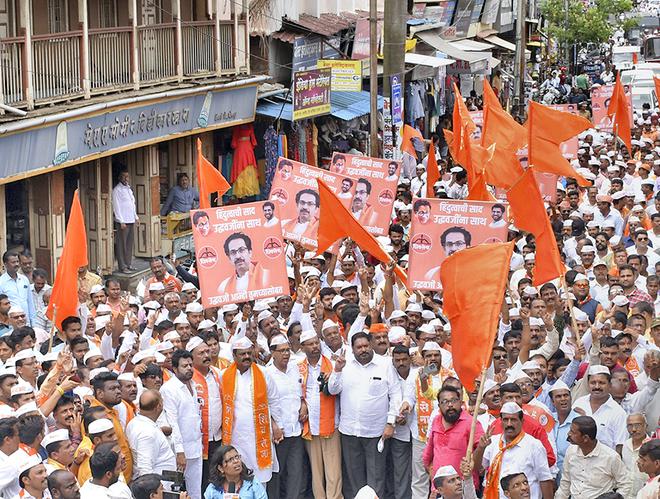
Sanjay Bhagat, who worked his way up the ranks to become a shakha pramukh, says, “Balasaheb fought for our identity, represented the Marathi manoos and stood for our welfare. Now, Uddhav ji has widened that definition and included everyone in it. He is the head of our family. They [rebels] broke the trust and ditched us. Uddhav ji represents what it means to stand for Hindutva. It does not mean to only be with Hindus. It means to be with everyone, irrespective of their religion and identity. The rebels have taken advantage of Mr. Thackeray because he is a decent man. They don’t understand that the party exists not because of them but they exist because of the party.”
Ashraf Khan, a tempo driver who became a Sena worker 15 years ago, says the party’s motto hasn’t changed in all these years. “Its focus is only on public welfare and good governance. The aim of all party workers is to make the lives of people better. Today, one can see that the party is run by educated and decent leaders who care for the people. I have always supported the Thackerays and will continue to do so.”
Mr. Khan terms the rebel MLAs “crooks who left in fear of raids” by the Enforcement Directorate, the Income Tax Department and the Central Bureau of Investigation. “There is no place for cowards in the party,” he says.
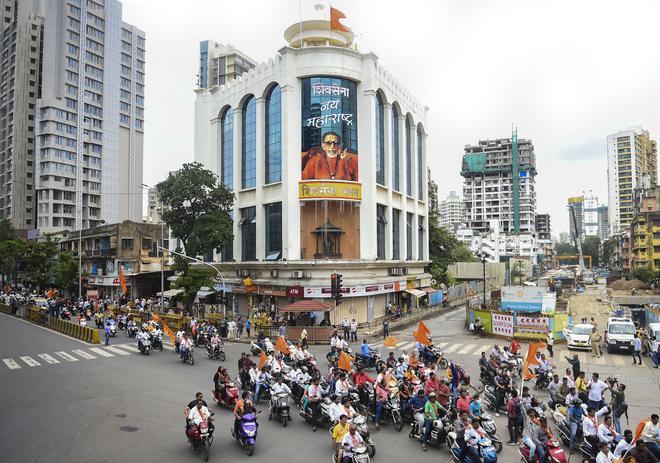
Pandurang Pawar, who works closely with the Thackerays at Sena Bhavan, the party’s headquarters in Dadar, says the main objective of a shakha is to make amenities accessible to all. “For people living in poor neighbourhoods, the focus is on gutter, meter and water. When a nullah (drain) gets clogged, an electricity meter is tampered with or there is shortage of water, party workers help the aggrieved and resolve their problems. The shakha also works to build social harmony by resolving fights and disagreements among family members. For middle-class city dwellers, sainiks help them secure ownership of their flats from builders or settle contracts with shopkeepers and businessmen. In upmarket areas, steps are taken to implement solid waste management measures in co-operative housing societies.”
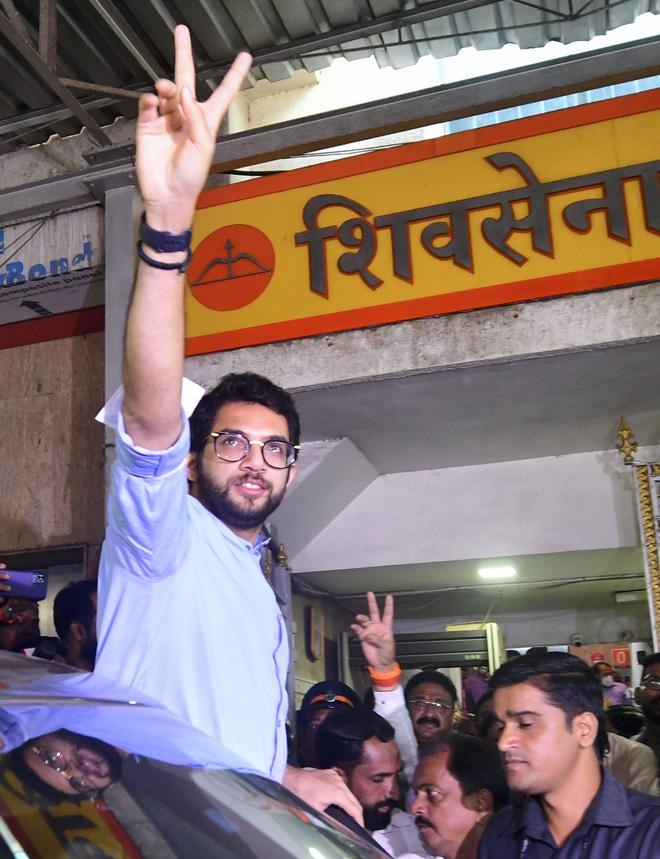
Currently, there are 227 shakhas in Mumbai, one in each civic ward, with members ranging in age from 25 to 80. Last year, the number of wards was increased to 236 ahead of the polls to the Brihanmumbai Municipal Corporation (BMC). The Sena is now in the process of setting up branches in the new wards. Each shakha has a shakha pramukh (head), a mahila pramukh (woman) and a yuva pramukh (youth): a leadership model devised by Mr. Aaditya Thackeray after he became a Cabinet Minister.
“The Sena ideology is spread through the shakhas. Sainiks have a different level of loyalty and commitment to the Thackerays. Everyone feels connected to them as there is no middleman. They don’t need to worry about the political party because it is attached to the organisation. For sainiks, if anything happens to the Thackerays, they consider it a personal attack. At present, they feel the family is under attack and it is being threatened,” says Prof. Patil.
‘Humanitarian approach’
Party workers say they are drawn to the Sena not only because of its focus on social welfare programmes but also because of the warm and friendly approach of the Thackerays.
Sonali Mhatre, a mahila pramukh in Chunabatti, says, “Uddhav ji makes you feel like you are a part of his family. No one has ever felt they were interacting with a politician even before he became the Chief Minister. There is no arrogance and high-handedness. Uddhav ji and Aaditya ji are both down to earth. All of us were crying when he left the Chief Minister’s official residence.”
Gopal Khadye, a shakha pramukh, says, “I have been working for the Sena since I was 13 years old. I used to run around the whole city and put up Balasaheb’s posters. It is because of him that we have Maharashtra and Mumbai. When I was appointed the pramukh, Uddhav ji told me, ‘I know you are loyal to the party but what about your family? How will you look after them? What work will you do to take care of them?’ Which Chief Minister does that? Who shows interest in knowing about a shakha pramukh’s personal life?” he asks.
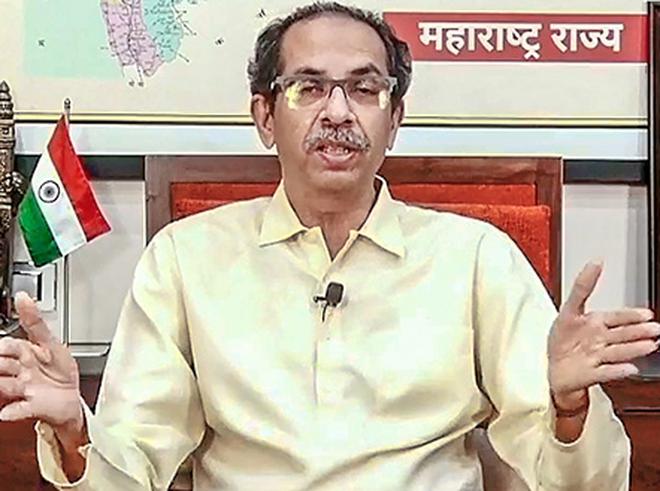
Pallavi Arolkar, a mahila pramukh in Khar West, says Mr. Thackeray has an endearing personality. “Every time he appeared on TV to warn us about the rising cases of COVID-19 and not to lower our guard, it felt like the head of a family assuring everyone that ‘I am with you, everything will be alright.’”
Arif Husain, a shakha pramukh in Nagpada, says he was with the Samajwadi Party but decided to join the Sena last year. “It is because of the work they do. The party’s approach has changed so much. My father was in politics, I have watched parties and politicians very closely, but the way Mr. Thackeray conducts himself, it feels like you are listening to a family member. No politician today will give up power like this.”
Mr. Husain says he was impressed with the way all sainiks came together to help during the COVID-19 pandemic. “They ensured the availability of beds, medicines and oxygen cylinders. Both Uddhav ji and Aaditya ji wanted to move forward by taking everyone along. They wanted the city and the State to progress and never divided it on the basis of caste, class or religion.” He adds that Mr. Thackeray is a “secular leader” as the same quantity of fruits and dry fruits distributed to Hindus during Deepavali was given to Muslims during Ramzan.
Mr. Pawar recalls that the sainiks worked round the clock to keep the morale of people high during lockdowns. “They worked closely with the BMC to clean and sanitise homes and toilets.”
‘Not practising soft Hindutva’
Party workers have also rallied behind Mr. Thackeray over accusations of the party chief abandoning Hindutva and ignoring its basic tenets. Deepak Bagwe, a shakha pramukh in Worli for the past 15 years, rubbishes claims of the Sena not being a Hindutva party. “Just because we support and stand for everyone, and do not discriminate on the grounds of religion, it does not mean that we are practising ‘soft Hindutva’. We have not left Hindutva, it is still our ideology and we work for the welfare and betterment of everyone. Humanity reigns above all religions.”
He says Balasaheb Thackeray had taught them whoever lives in Hindustan, be it Muslims, north Indians or south Indians, all are one and should not be treated differently. “In my area, people from all religions co-exist peacefully. If Eknath Shinde had a problem with Uddhav saheb’s Hindutva and found resonance with the BJP’s approach to Hindutva, he should have left the party the day the Sena severed ties with the BJP after the polls. Why did he wait for so long?” Mr. Bagwe says.
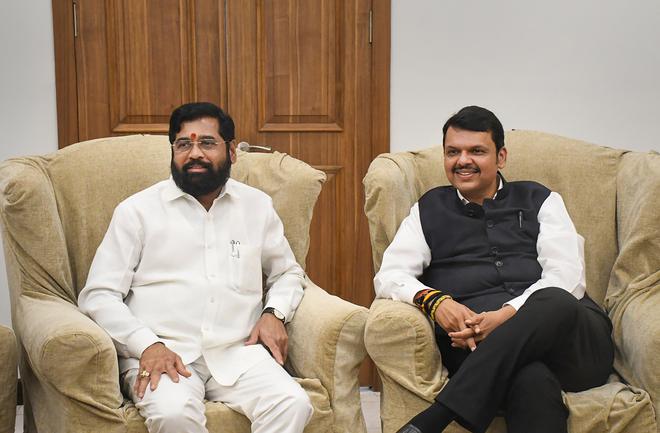
Sending out a warning to Mr. Shinde, he says the BJP only believes in playing divisive politics. “They believe in dividing and ruling. If the Sena does not believe in upholding its Hindutva principles, then why did Uddhav ji change Aurangabad’s name to Sambhajinagar, after a great Maratha warrior? Aaditya ji just returned from Ayodhya after visiting the Ram temple. Why would he do that if the Sena did not believe in practising Hindutva? I stand by Uddhav ji and applaud his decision to step down as Chief Minister,” he says.
Kiran Tawade, a party worker from Lalbaug, says, “Just because Mr. Thackeray is soft-spoken, focuses on social welfare and good governance, and does not target burqa-clad women and men wearing skullcaps, it does mean that he is following ‘soft Hindutva’.” She adds that his approach to Hindutva is pure and he is fully committed to it. “All those MLAs who have left our party were scared of the raids and summons by the Central probe agencies. No sudden love or loyalty blossomed in them for Hindutva. Eknath Shinde wants us to prove our belief in the values of Hindutva... this is not acceptable. Shiv Sainiks lead by example and will continue doing the good work for one and all.”
Ramesh Rawal, a Sena functionary for the past 13 years in Byculla, says Balasaheb Thackeray had introduced the Hindutva ideology in Indian politics and now his son is being accused of being soft on Hindutva. “This is atrocious and will never be accepted. We have always worked and helped everyone irrespective of their religion and will continue to do so. Hindutva is in the blood and veins of every Shiv Sainik. No one needs to prove anything to anyone.”
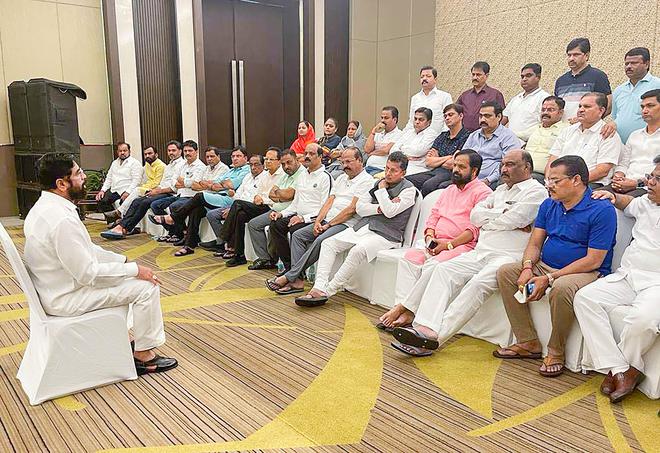
Facing a fresh storm
With Mr. Shinde’s exit along with a majority of the party’s MLAs, the Sena finds itself at a political crossroads again. The present crisis is probably the biggest challenge to its survival since the death of Balasaheb Thackeray in 2012.
Highlighting that the Sena is not facing a rebellion for the first time, Mr. Rawal says the party will weather this storm too. In its 56-year history, the Sena has witnessed the exit of party stalwarts such as Chhagan Bhujbal (1991), Narayan Rane (2005) and Raj Thackeray (2006). “Yet again, we will come out of this crisis stronger. We will never abandon the head of our family,” he says.
Suryakant Koli, a party worker for the past 30 years, says, “Chhagan, Raj bhau and Narayan saheb left us. We have still survived and we will continue to thrive even after Shinde’s departure. This is not an attack on Uddhav saheb, it is an attack on all of us.”
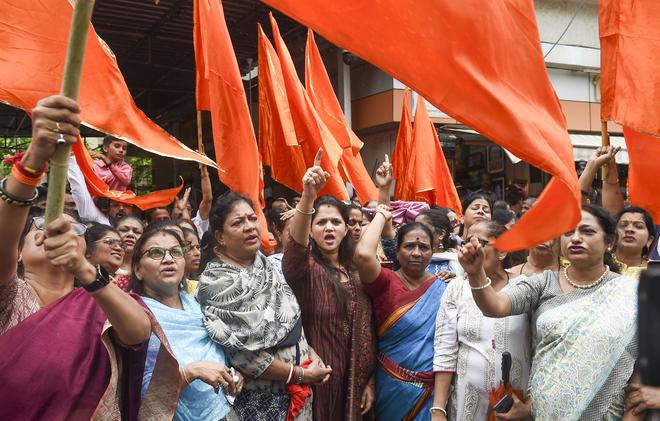
With the Sena still enjoying tremendous support at the grassroot level, it is too early to write off the party’s chances of survival. Rehana Dalvi, a party worker for the last eight years, says she will be loyal to the Thackerays till her last breath. “I don’t care who leaves the party. It has survived betrayal in the past and will emerge stronger again.”







